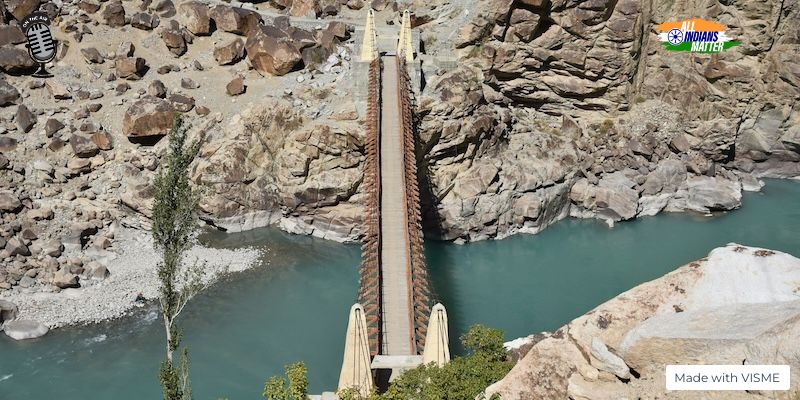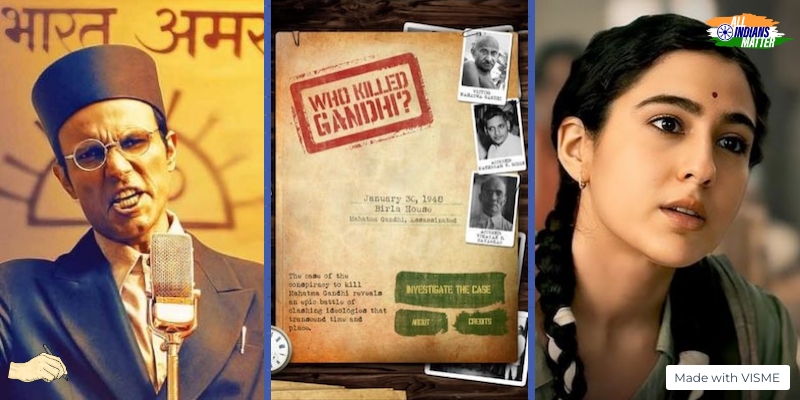Ashraf Engineer
April 6, 2024
EPISODE TRANSCRIPT
Hello and welcome to All Indians Matter. I am Ashraf Engineer.
Not too long ago you’d have heard of the latest row between India Pakistan. A war of words followed India’s completion on February 25 of the Shahpur Kandi Barrage on the Ravi river in Punjab’s Pathankot district, thus stopping water flow to Pakistan. This was a project in the woks for more than three decades, now redirecting 1,150 cusecs of water to irrigate more than 32,000 hectares in the Kathua and Samba districts of Jammu and Kashmir. This water previously flowed to Pakistan. This shift in water management is in line with the 1960 Indus Waters Treaty that gives India exclusive control over the Ravi, Sutlej and Beas rivers, while Pakistan manages the Indus, Jhelum and Chenab. The Indus Waters Treaty was signed on September 19, 1960, between India and Pakistan and brokered by the World Bank. It fixed the rights of each country regarding the use of the Indus river system. What exactly is this treaty and why is it so critical now?
SIGNATURE TUNE
The Indus originates in Tibet, flows through Kashmir to Pakistan and finally into the Arabian Sea. It has several tributaries, notably in the Punjab Plain — these are the Jhelum, Chenab, Ravi, Beas and Sutlej rivers. This river system has been the lifeblood of the region for centuries.
Modern irrigation began to make an appearance in 1850 or so. During the Raj, large canals were constructed and old canals revived. With freedom from British rule came Partition. Properties and resources were bifurcated, and this included the water system. There was a stopgap arrangement in the form of the Standstill Agreement of 1947 but it expired soon enough and, on April 1, 1948, India began withholding water from the canals that flowed into Pakistan.
The Inter-Dominion Accord of May 4, 1948, mandated that India provide water to Pakistan in return for annual payments. This too was as a temporary measure, with a permanent solution to be cemented after talks. However, neither side was willing to budge, resulting in a stalemate.
In 1951, David Lilienthal, former head of the Tennessee Valley Authority and the US Atomic Energy Commission, visited the region while researching magazine articles. He suggested that India and Pakistan work out an agreement to jointly develop and administer the Indus river system with the involvement of the World Bank. Eugene Black, then president of the bank, thought it was a great idea. It was at his suggestion that engineers from each country formed a working group, with World Bank engineers providing advice. However even these discussions came to naught.
In 1954, the World Bank submitted a fresh proposal for a solution. Six years of negotiations followed, after which then Indian Prime Minister Jawaharlal Nehru and Pakistani President Mohammad Ayub Khan signed the Indus Waters Treaty.
Other than deciding who gets which river, the treaty also provided for the funding of dams, link canals, barrages and tube wells. These gave water to Pakistan in the amounts it used to receive from the rivers now assigned to India.
The treaty also led to the formation of a Permanent Indus Commission, with a commissioner from each country. It was a channel of communication and a mechanism to resolve disputes. And it worked. Over the years, numerous disputes were settled.
However, in 2017, India completed the Kishanganga dam in Kashmir and progressed on the Ratle hydroelectric station on the Chenab overruling Pakistan’s objections and while negotiations with the World Bank over whether the project designs violated the treaty were still on.
Last year, India demanded that Pakistan renegotiate the Indus Waters Treaty. And this time, the dispute redressal mechanism itself is being challenged. India questioned Pakistan’s push for simultaneous dispute resolution mechanisms, through a World Bank-appointed neutral expert and arbitration by a court also constituted by the bank.
So, why does India want to renegotiate the treaty?
Climate change and burgeoning populations have meant India and Pakistan face a higher risk of flood and drought, and a greater need for regulation of water resources. Since the signing of the treaty, India’s population has nearly tripled and Pakistan’s has increased five-fold. Naturally, irrigation and energy demands are rising even as groundwater is depleted.
As a solution, each country has turned to dams and hydroelectric power. This is being done at different points on the river system.
The latest dispute is about the technical designs of the Kishanganga and Ratle hydroelectric projects. In 2016, Pakistan raised an objection with the World Bank, claiming that their design will enable India withhold water from it. Pakistan is also concerned that, during the monsoon, as India releases excess water from the dams, it could flood Pakistani territory. India says the dam plans adhere to the treaty.
Meanwhile, there’s a further complication. As rainfall patterns change, the rivers in the Indus Basin are steadily changing too. As the planet warms, glacial melt is increasing, the monsoon is altering and heatwaves are worsening. This means that the rivers are dry at times and flooding their banks at other times.
According to NASA data, the Indus Basin aquifer is the second-most stressed in the world and lacks the natural replenishment to offset usage. This is in part due to the region’s reliance on groundwater for farming and no safeguards against overconsumption. India is the world’s largest groundwater consumer and Pakistan is the third largest. Most of the water is used in agriculture. What doesn’t come from groundwater sources comes from canals connected to Indus Basin waterways.
Indeed, India’s Parliamentary Committee on Water Resources cited climate change and global warming in 2021 as reasons to renegotiate the treaty.
All this, some argue, changes the context and thus makes the Indus Waters Treaty out of date.
The populations of both countries are demanding more from their political leadership when it comes to water supply. This makes cooperation even more crucial. However, there has always been a lack of trust between the two countries that have fought three wars and a localised conflict in Kargil. Communication and accommodation are not their strong points.
If the treaty is to persist, it needs greater resilience built in. Climate change must become the starting point and there needs to be flexibility on both sides that acknowledges the challenges each faces.
It’s also probable that India is using the water allocation as a tool to pressure Pakistan on other issues – most notably cross-border terrorism.
In 2018, the international Financial Action Task Force grey-listed Pakistan after finding its action against terror financing to be weak. However, it was delisted after a while. The call to modify the Indus Waters Treaty is, then, an opportune way of keeping up the pressure on Pakistan.
Let’s not forget the domestic political gains of getting tough on Pakistan. The Lok Sabha elections are coming up and Pakistan has always been a pet subject of the ruling Bharatiya Janata Party. In 2019, Prime Minister Narendra Modi showcased the airstrike on Pakistan after a terror attack as evidence of his tough-guy credentials before the general election.
As the prospect of water wars becomes all too real, a breakdown of the treaty would further worsen bilateral relations. Perhaps even India is not interested in pushing Pakistan beyond a point. If it did, it would risk being seen as an irresponsible regional power at a time when it is seeking to expand its influence on the global scene.
Whether the government’s need to appease its domestic audience overwhelms the need to find a workable solution remains to be seen. In the meantime, tensions over the water treaty will simmer on.
Thank you all for listening. Please visit allindiansmatter.in for more columns and audio podcasts. You can follow me on Twitter at @AshrafEngineer and @AllIndiansCount. Search for the All Indians Matter page on Facebook. On Instagram, the handle is @AllIndiansMatter. Email me at editor@allindiansmatter.in. Catch you again soon.






